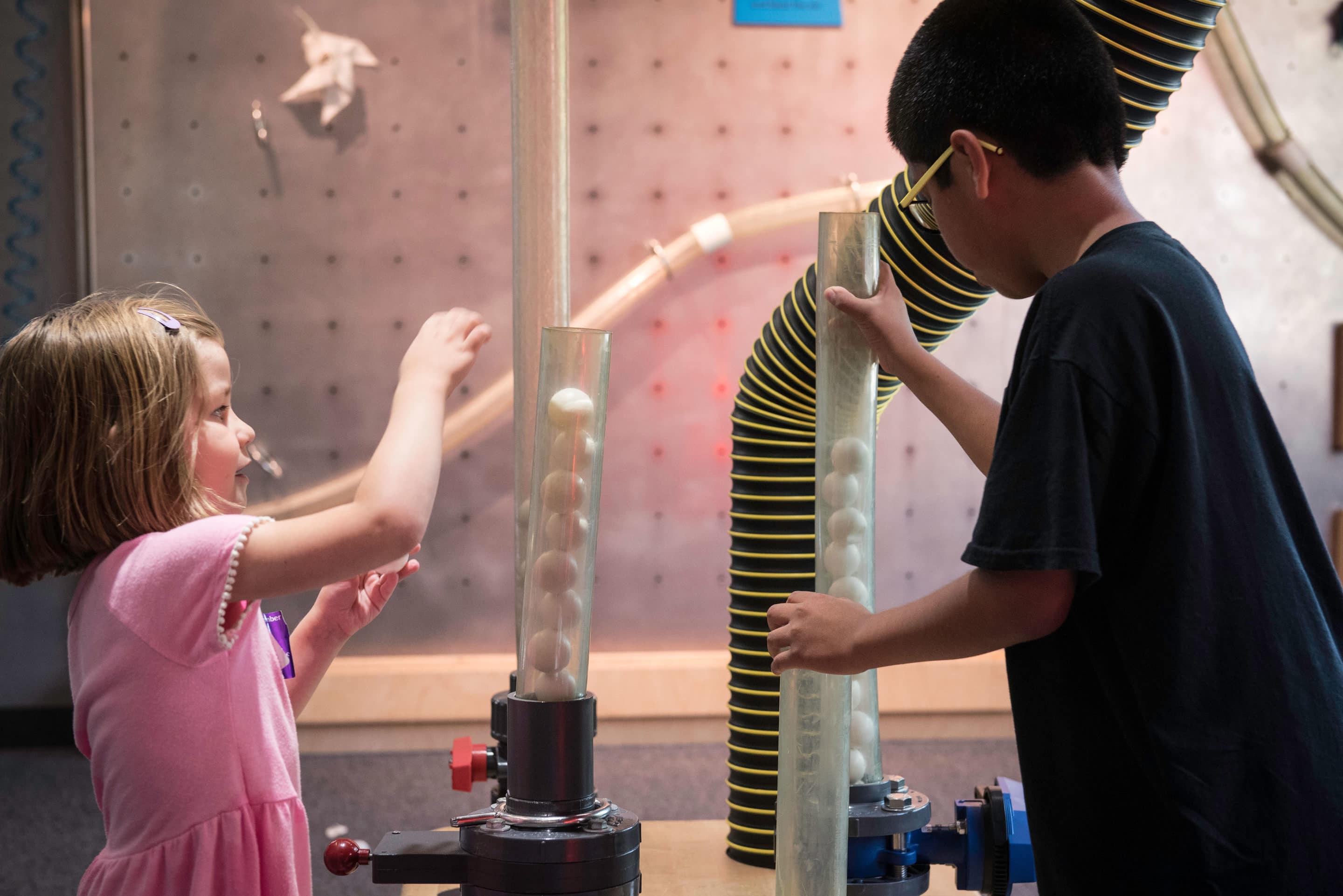Executive Function Skills on Display at Minnesota Children’s Museum

By Marie Lister, teaching specialist at University of Minnesota’s Institute of Child Development
I grew up in St. Paul and have clear memories of going to Minnesota Children’s Museum as a kid (I know I’m not the only one who has fond memories of crawling around inside of that maze)!
You can imagine my delight, then, at being asked to revisit the museum as an early childhood professional. I study the growth of “executive function” or “EF” skills in young children and help organizations and schools embed these important developmental skills into the services that they offer children and families.
As I walked around the newly remodeled Minnesota Children’s Museum, I was excited to see children using their EF skills in a variety of ways as they engaged with the new materials and exhibits!
What are Executive Function Skills?
Hearing the phrase “executive functions skills” can sound intimidating, but they actually involve skills that are familiar to all of us. We all use our EF skills when we focus our attention, solve problems or intentionally control our behavior. When you stop yourself from yelling at a driver that cuts you off while you’re driving, congratulations! You’ve just used your EF skills!
Often when we talk about EF skills, it’s useful to break them down into the three components: working memory, inhibitory control and cognitive flexibility.
- Working memory is the ability to hold information in your mind and work with it. Children use their working memory skills when they follow multiple step directions or when they remember the parts of a familiar routine.
- Inhibitory control skills refer to the ability to ignore distractions and act based on thought, not impulse. When young children focus their attention on a teacher’s instructions or wait for a turn to use a toy, they are using their inhibitory control skills.
- Cognitive flexibility is needed for problem solving and changing gears or shifting perspective. When children figure out how to put puzzles together, use blocks to build structures or remember that they can run outside in the yard (but not inside the house), they are using their cognitive flexibility skills.
What’s Happening at the Minnesota Children’s Museum
The new exhibits at Minnesota Children’s Museum create plenty of opportunities for children to use these important skills in the context of good old-fashioned fun.
Many of the exhibits are centered around the use of open-ended materials, or materials that have multiple purposes such as blocks, fabric, tubes, water, etc. Open-ended materials allow children to think flexibly as they explore, and problem solve and are a key ingredient to helping children build EF skills through play.
In the Forces at Play exhibit, for example, I saw children using their EF skills as they experimented with different ways to put together tubes, buckets and balls to manipulate air flow. The Imaginopolis exhibit was full of building materials that invited children to think creatively and work cooperatively to build large structures. Out in The Tip Top Terrace children were using their EF skills as they put together familiar shapes in novel ways to create their “dream cities.”
And of course, we can’t forget The Studio in the Target Gallery, which is filled with materials and space to get messy and creative. This exhibit invites children to explore and experiment with open-ended materials like paper, wood, ink, fabric and more. I saw children focusing their attention, following multiple step directions and experimenting with different materials (all EF skills!!) as they worked to make pillows under the guidance of a museum employee.
In addition to the materials themselves, the signs throughout the museum offer helpful hints to caregivers around the concepts of executive function and developmentally appropriate play. One of my favorites reads “Wait…Wait…Don’t tell them! Ask open-ended questions. Here’s one: “What have you tried so far?” Much like open-ended materials, open-ended questions have no “right” answer. Instead, they invite children to think flexibly and engage with ideas and materials in new ways. These signs model language caregivers can use to extend their children’s EF skills.
What Can I Do at Home?
During trainings, people often ask me what they can do at home to support the development of these skills. The good news is, you’re probably doing it already! Here are a few tips:
Familiar routines for things like bedtime help children build their working memory skills; when children know what to expect next, they are building that memory capacity. Stepping back and allowing children to solve problems for themselves is another way to support these skills at home. Looking for opportunities where you can empower children to think of solutions and try them out is a way to build those flexible thinking skills!
There are also games that target EF skills that are easy to implement in any setting.
- Simon Says: This game gives children the opportunity to focus their attention and practice following directions (inhibitory control). Children use their working memory skills to remember directions!
- Freeze Dancing: This is an easy way for children of all ages to practice their EF skills. Remember (working memory) to stop when the music stops (inhibitory control)!
- Shape game: I play this game with my preschoolers all of the time! Cut different shapes out of construction paper and wonder aloud what the shapes could make. I usually model for my students that my triangle can be an ice cream cone or the roof of a house… and then ask them what their triangle could be. My students love this game and use their cognitive flexibility skills to create different designs!
Stay Informed
Sign up for the Power of Play email newsletter for tips, info and inspiration about making play a priority for your family.
10 West Seventh Street
St. Paul, MN 55102
651-225-6000
mcm@mcm.org
